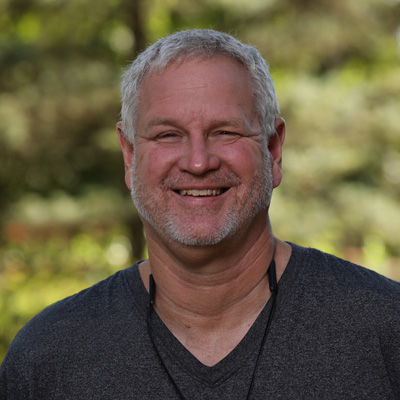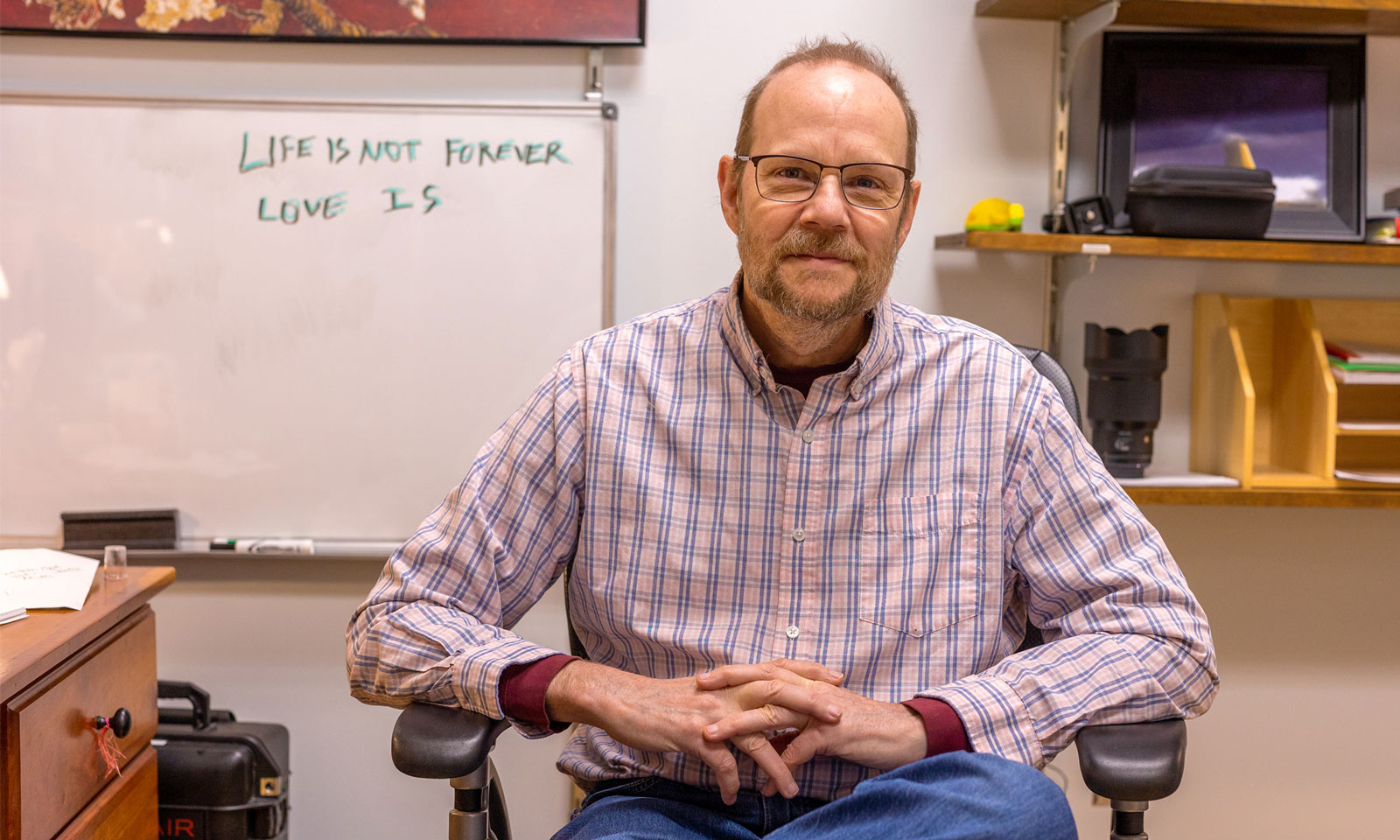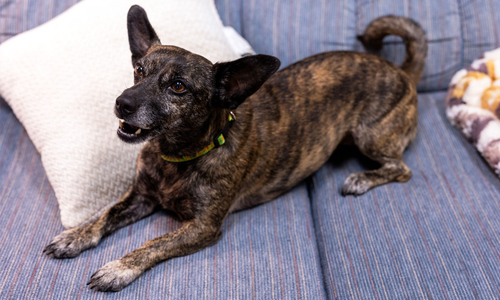In a year filled with professional triumph and personal loss, visiting assistant journalism professor Doug Swift recalled a poignant moment from the Nov. 1, 2022, premiere of his interactive documentary 10,000 Acres in Slayter Hall.
Swift was surrounded by Denison faculty, students, and members of the community who had gathered to see his sweeping story of a swath of Appalachian land in southeastern Ohio that’s been home to farms, strip mines, and a modern-day wildlife conservation center.
Among those in attendance was Swift’s former student and President’s Medalist Sarah Hume ’22, who worked as a writer and editor on 10,000 Acres.
“Sarah had driven down from Michigan with her mom,” said Swift, a filmmaker who specializes in documentaries on Ohio subjects. “At some point during the premier, she turned to her mom and said, ‘This is what I want to do.’”
Inspiring students to pursue their passion for storytelling is rewarding to Swift, who arrived at Denison in 2017 after teaching at Muskingum University and Ohio University-Zanesville. He teaches and serves as a faculty advisor for The Reporting Project, the university’s non-profit news organization.
Praise for 10,000 Acres has come at an emotional time for the instructor, whose wife, Michèle, died in early 2022 of cancer. In a wide-ranging interview, Swift spoke of how he became a documentarian, what students with interest in the genre can do to get involved, and why his four-legged friend, Figgy, has been so instrumental in coping with Michèle’s passing.
Figgy has become a fan favorite among journalism faculty and students. She is sometimes featured on posters hanging around Barney-Davis Hall.
How did someone who taught English, creative writing, and journalism transition into the world of documentary filmmaking?
I went to college to study cinematography. I ended up with a minor in it, but I learned the basics. When I became a professor at Muskingum University, where I taught English, creative writing, and journalism, I thought my days of filmmaking were gone. How would I have the money to buy the film, process it, and get an editing table?
So, what changed?
I got tenure at Muskingum, but I needed to quit. I felt too contained. I needed other things to learn and do. So, I did many things. Woodworking, yoga, meditation, and I was the primary caregiver to my son. Then, video was digitized, and I bought a little Canon Sure Shot, started filming my son and making videos, and taught myself digital filmmaking (in the early 2000s). I would just find any subject and make a little documentary about it. My wife, Michèle, was amazingly supportive because we barely had any money. But she supported me as I got nicer cameras and mics and started expanding my repertoire.
Several Denison students contributed to 10,000 Acres. If others want to pursue this field, what’s a good way to get started?
One of our core classes is Multimedia Storytelling. Their final project includes blending writing, audio, documentary work, and photos. But to really get an in-depth understanding of what this work is, I would recommend the Summer Scholars program. Pol Le ’25 and Anna Jones ’24 did the WildeCamp story (in 10,000 Acres). That kind of work doesn’t happen during a semester. They had 10 weeks, and that was the only thing they were doing. That was a transformative experience not only for them but for me in understanding what those Summer Scholars programs can be.
You had no reservations in allowing a student such as Sarah Hume to become a significant contributor. How did that evolve?
Sarah Hume is our superstar. For senior projects, she and another student went out and found stories. There wasn’t a professor who said, “I have some subjects for you, see what you can do with them.” Sarah was working on a professional level in her fourth year of college. She wrote a great story that got published in Belt magazine. Sarah is my main editor. She has been fundamental on this project.
What is the story behind Figgy and her presence on campus?
We got Figgy two days before Christmas several years ago. My wife had a fear of dogs, so we knew we needed a gentle one. She’s the one who picked out Figgy. Well, actually, Figgy picked her out, walking up to her and giving my wife a gentle lick on the cheek. At the time, we didn’t know six months later Michèle would be diagnosed with ovarian cancer, and seven months after that, we would lose her. When I lost Michèle, I didn’t know what to do because Figgy is not a dog you can leave at home all day. Little by little, I began bringing her to campus with me, and the students love her. She supports me, gets me through hard days.


